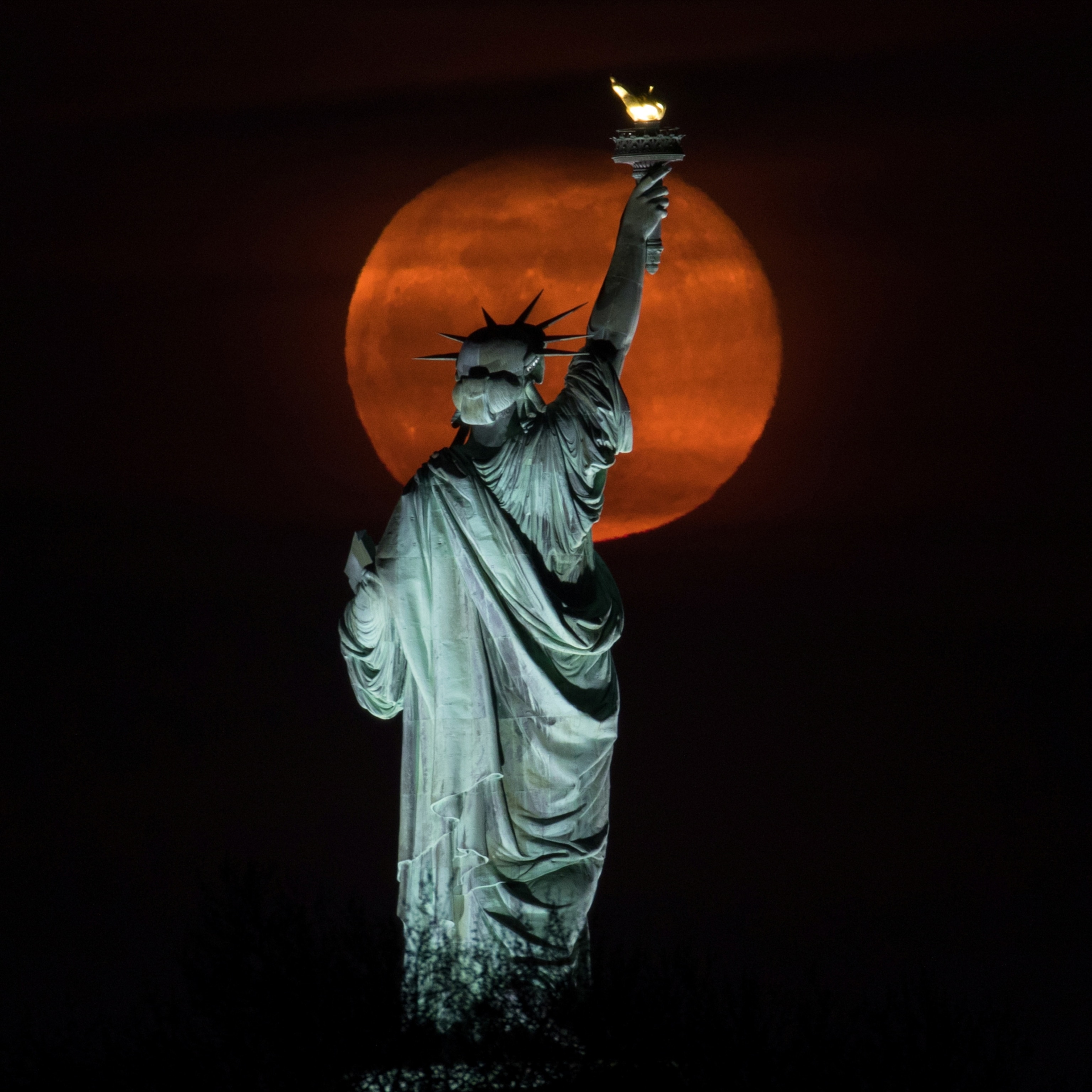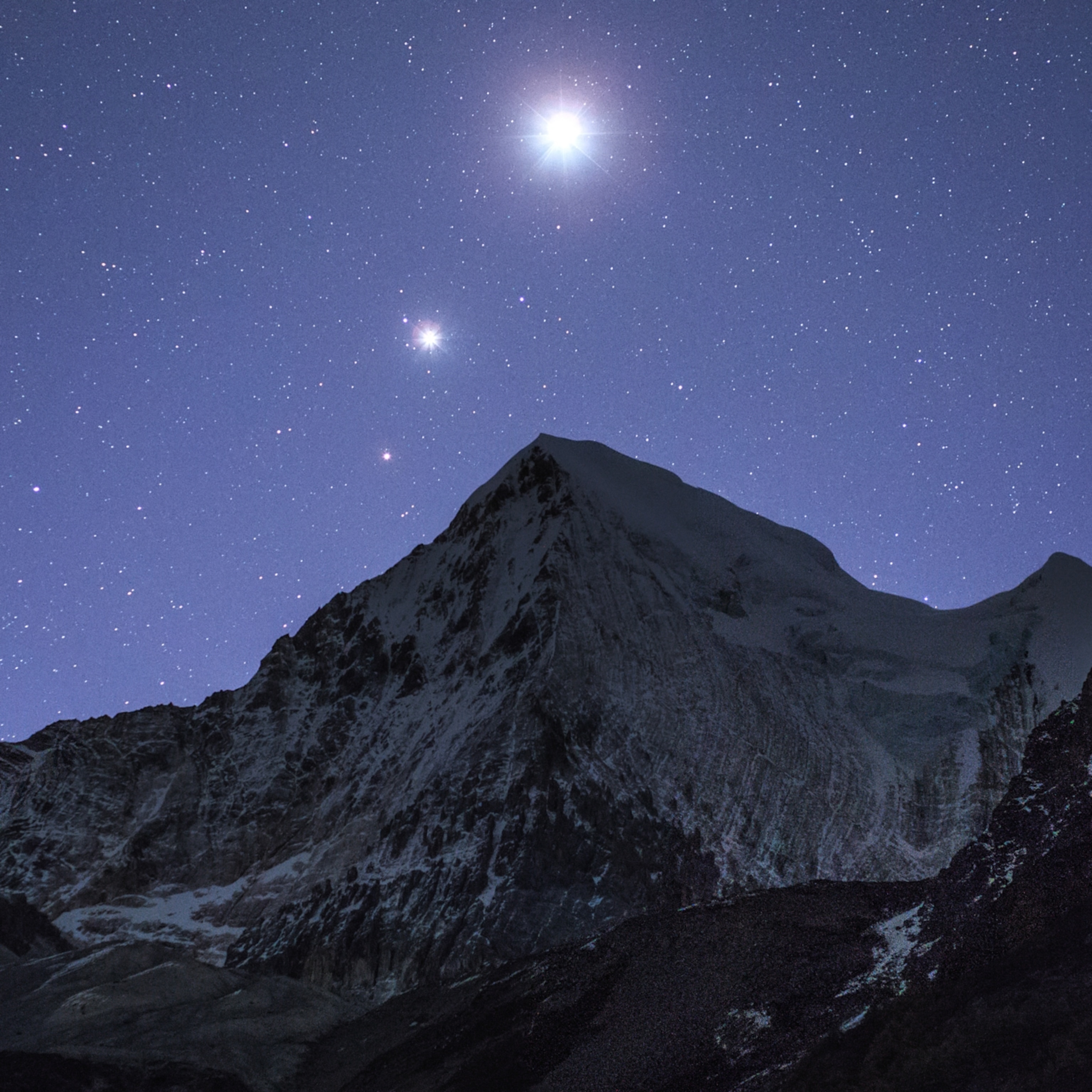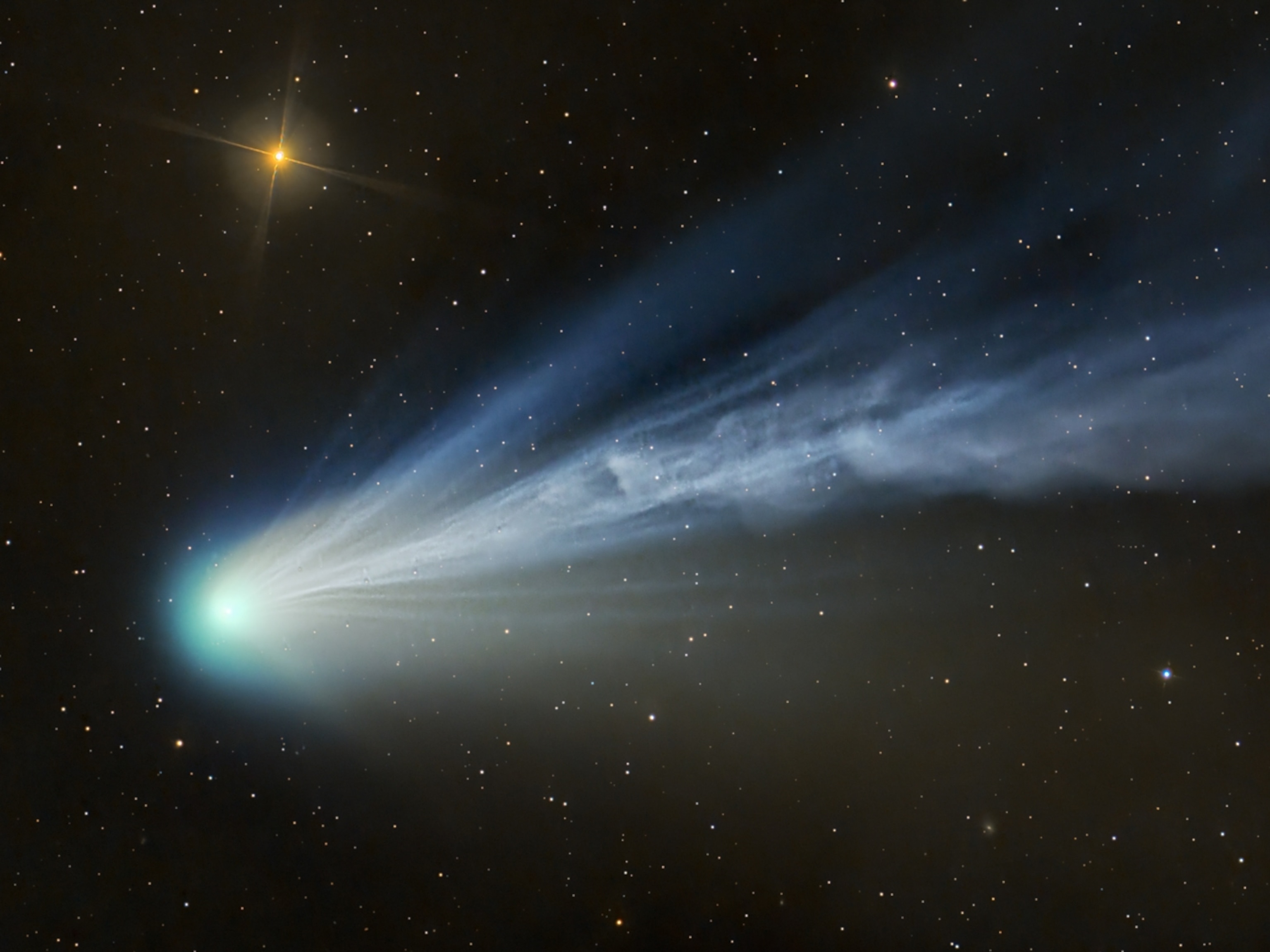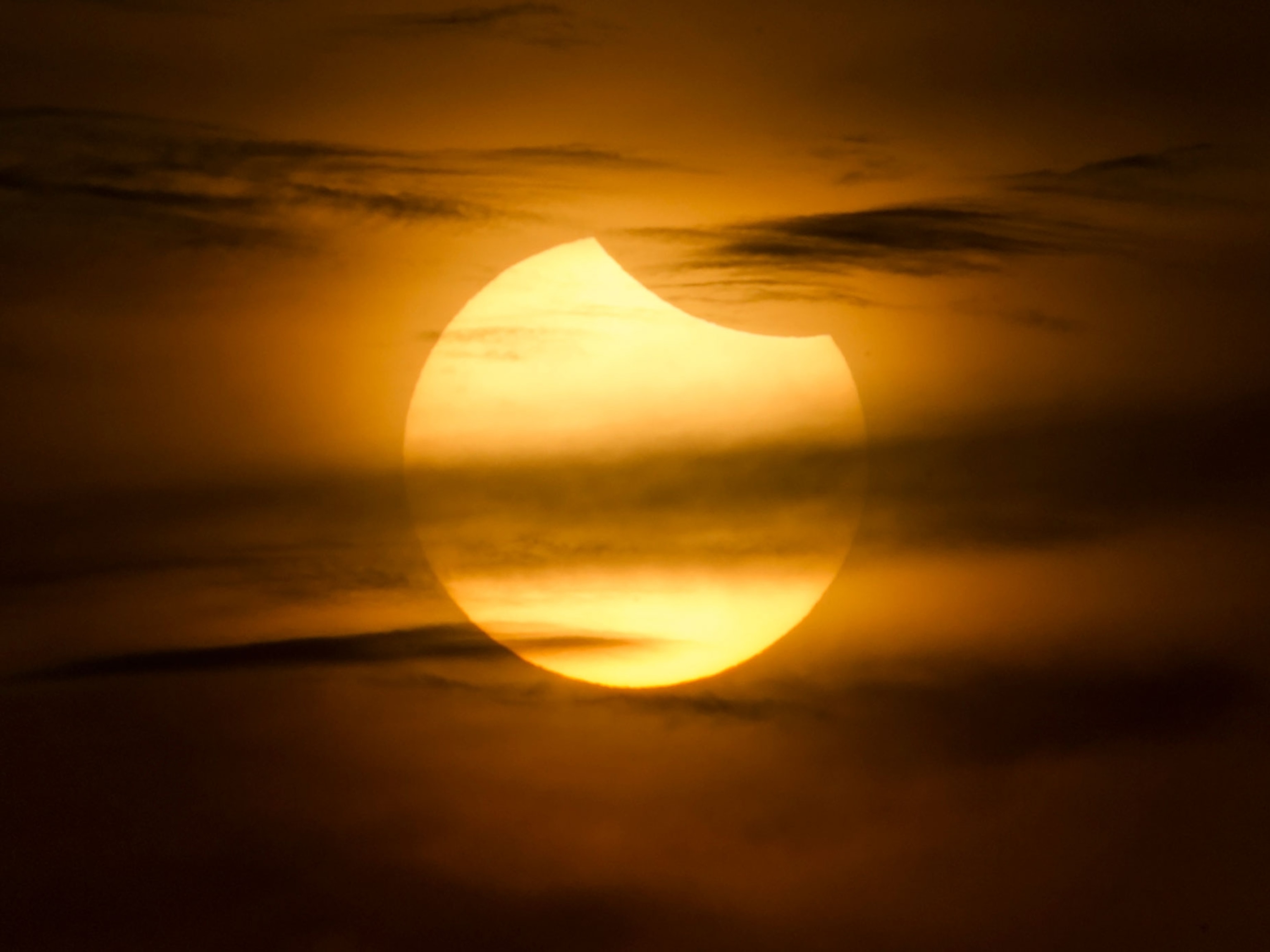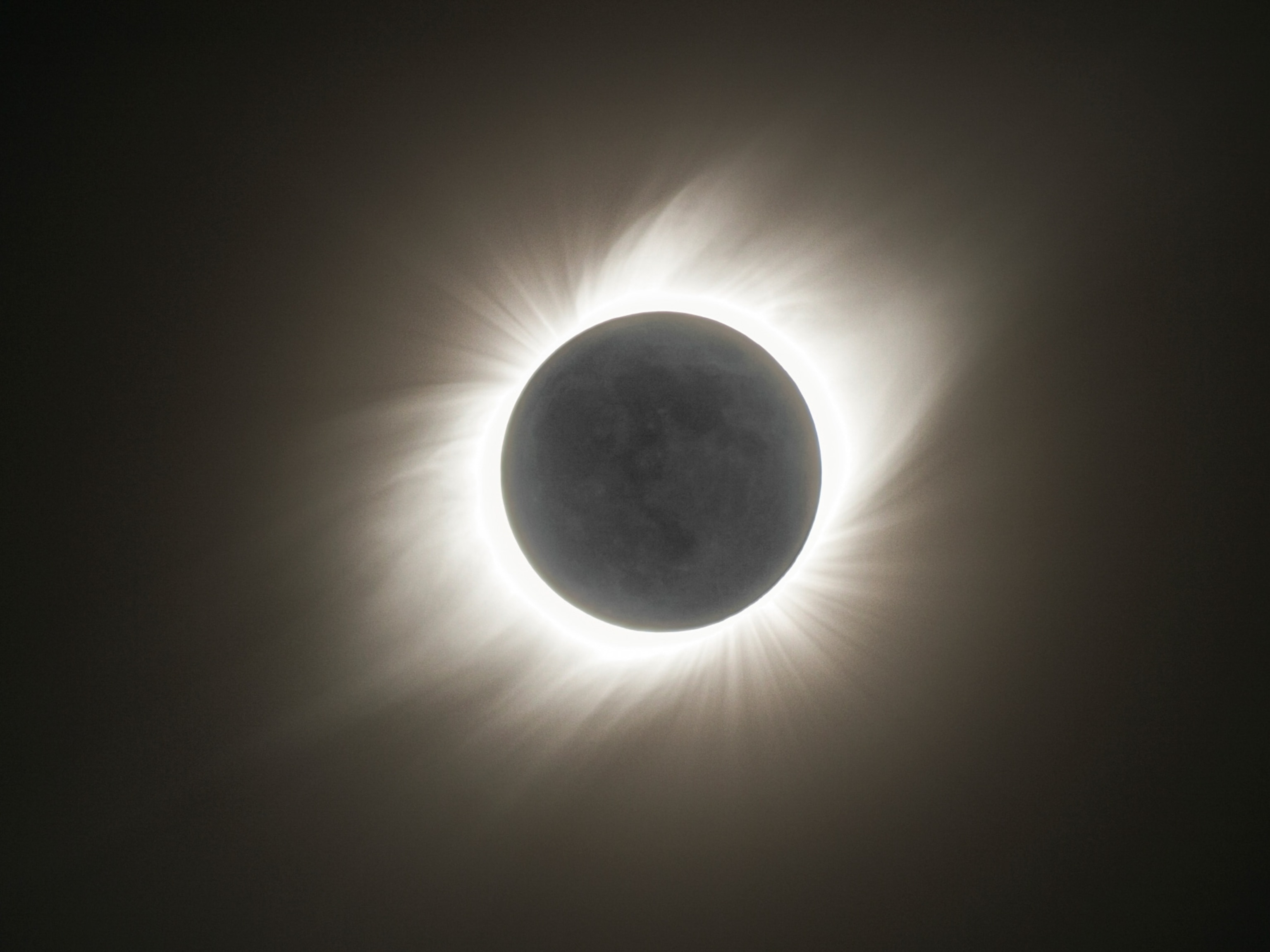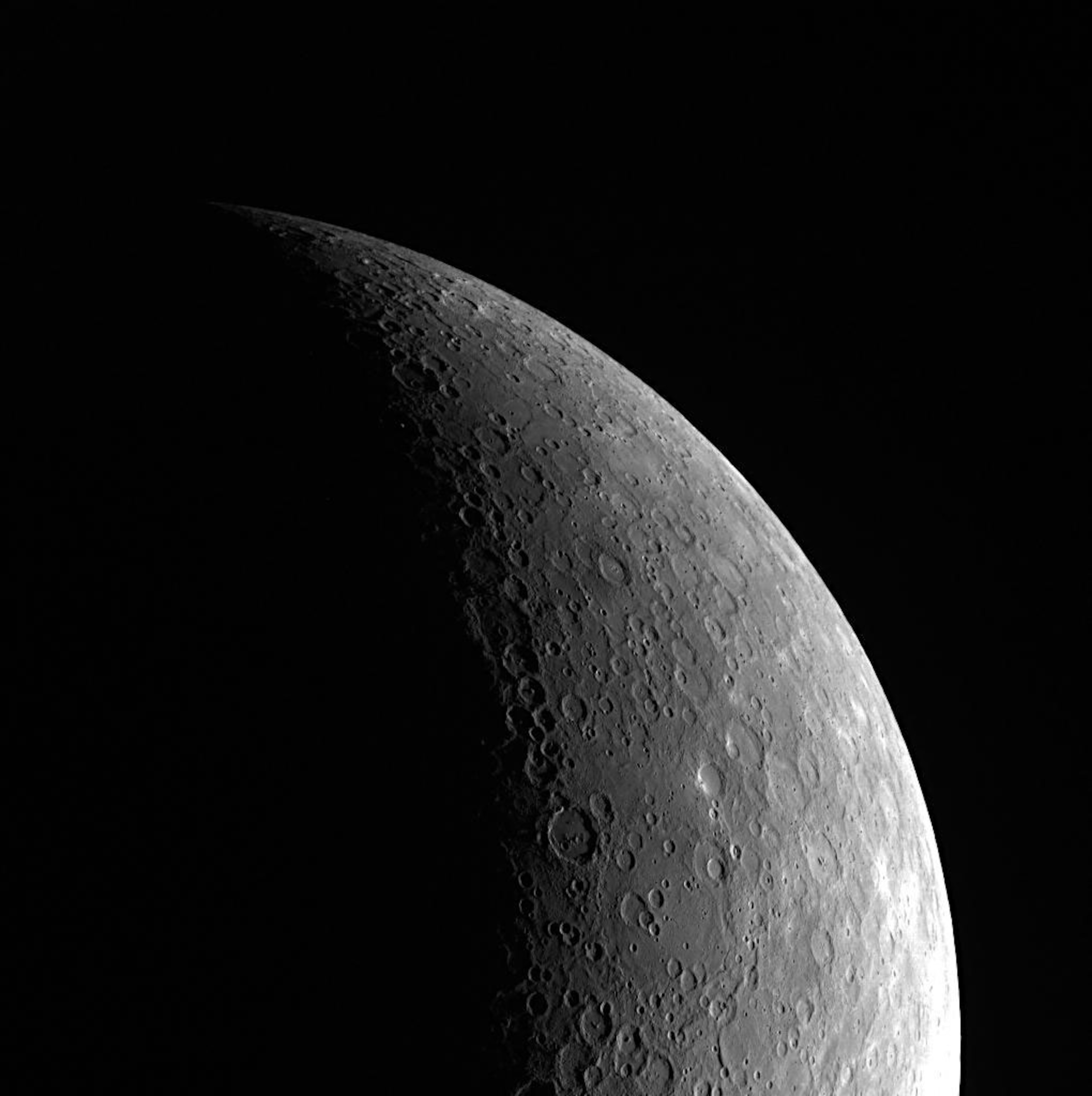
Mercury rises, and more top sky-watching events in February
Look up for the year’s best view of the innermost planet, as well as a super-size moon and a southern meteor shower.
While the mercury continues to dip for viewers in the Northern Hemisphere, the coming month heralds plenty of reasons to bundle up and gaze at the night sky, including the best evening showing of the planet Mercury for 2019, a stunning supermoon, and a series of planetary pairings. Warmer viewers in the Southern Hemisphere will get all these sights plus an added treat in the form of a dazzling meteor shower.
So dust off those binoculars, and mark your February calendar.
Venus and deep-sky gems—February 4
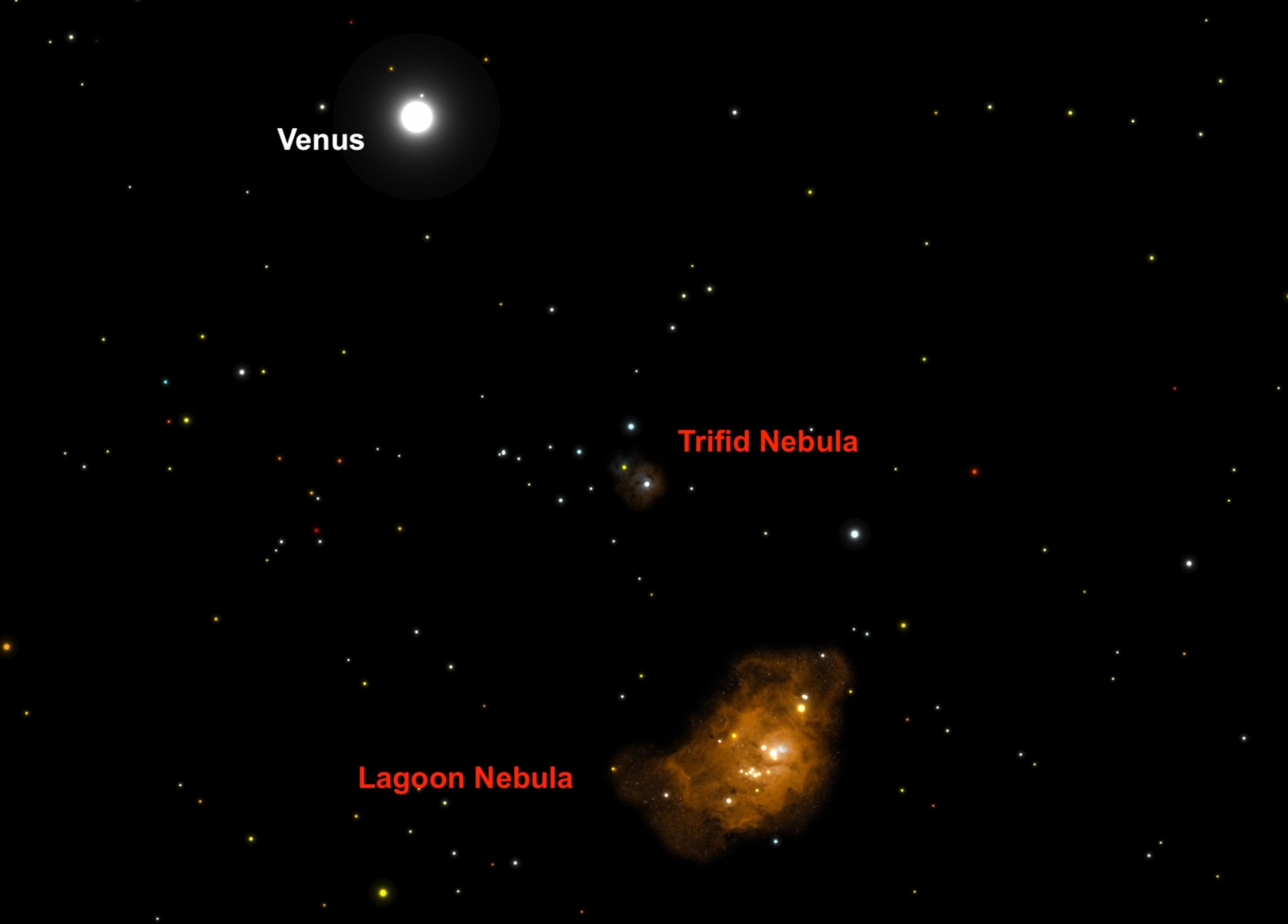
On this night, the planet Venus will pass by two of the finest cosmic clouds of gas and dust, the Trifid and Lagoon nebulas. Your best bet to catch these denizens of the deep sky is to hunt them down while your local sky is dark, at least an hour before sunrise.
Train your binoculars on Venus hanging low in the eastern sky, and in the same field of view, look south of the planet for two grey ghostly patches of light. The one that appears closer to Venus is the Trifid Nebula, a star factory about 5,200 light-years away. The object farther out is the 4,300-light-year distant Lagoon Nebula.
Alpha Centaurids peak—February 7

Sky-watchers in the Southern Hemisphere will get to see a modest meteor shower peaking on this night. Known as the annual Alpha Centaurids, the shower is usually only a trickle, with about a half-dozen shooting stars an hour seen most years. However, these rates can sporadically increase to about 25 meteors an hour, and the only way to know for sure is to go out and look up.
Meteors will appear to radiate from the area of sky around the Alpha Centauri star system, which will be riding almost directly overhead in the late-night sky this time of year. Look for meteors to start falling after local dusk and before dawn the next day.
Moon meets Mars—February 10
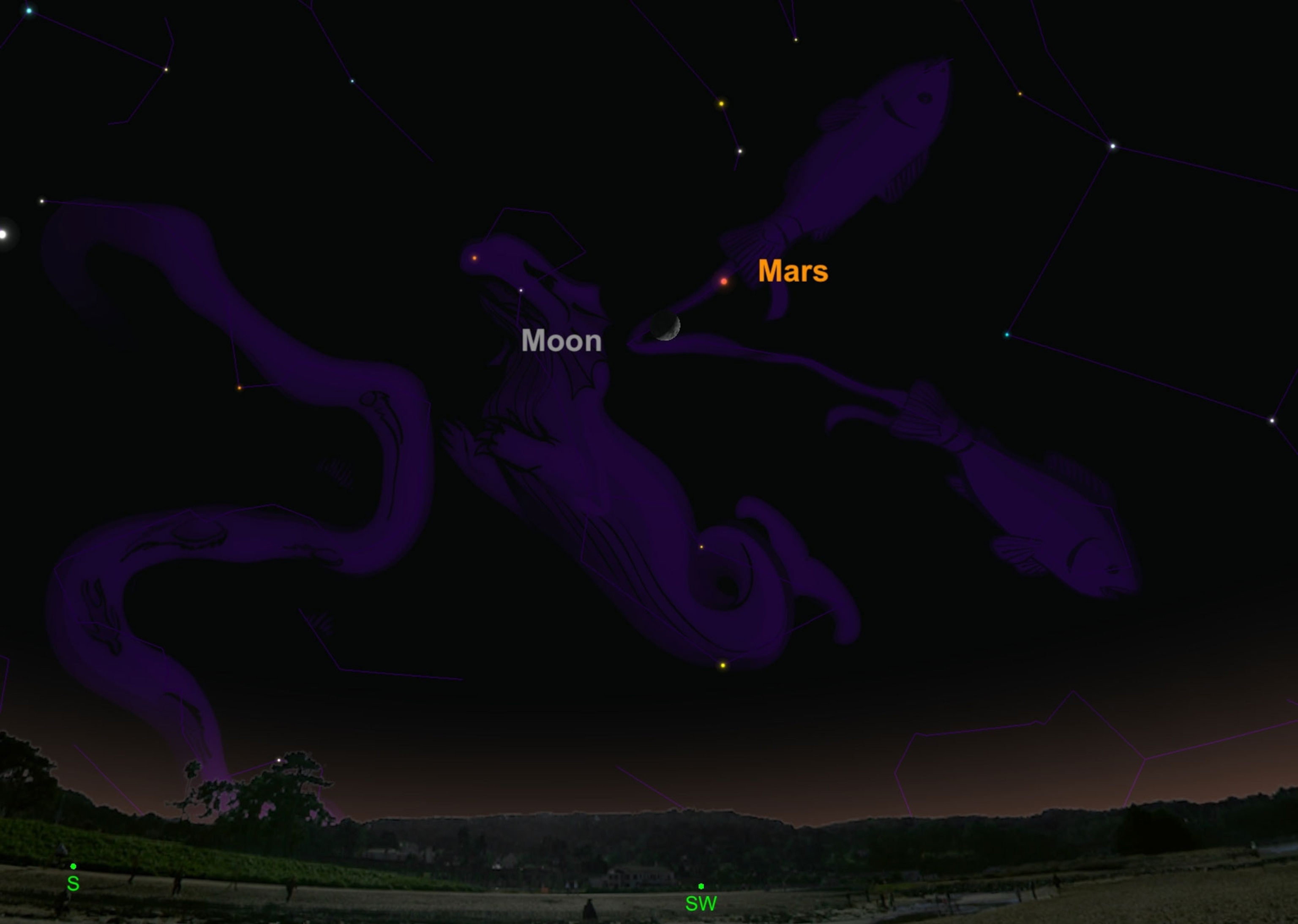
On the 10th, look halfway up toward the southwestern sky about 45 minutes after local sunset to see the waxing crescent moon with bright, ruddy Mars perched above it.
Mars and Uranus—February 12

As soon as darkness falls on the 12th, look for Mars hanging halfway up the southwestern evening sky. The red planet will be acting as a convenient guidepost for viewers hoping to track down the seventh planet from the sun, Uranus.
This planetary pair will be quickly approaching each other in the night sky in the weeks ahead. On this night, they will make their closest approach and be separated by only one degree, equal to the width of your thumb held at arm’s length. But don’t let their apparent closeness fool you—on average, Mars is 140 million miles from Earth, while Uranus is a whopping 1.8 billion miles distant.
While the green giant is technically a naked-eye planet when seen from very dark skies, your best bet at spotting it will involve binoculars or small telescopes. Look for a tiny blue-green disk to the lower left of bright orange Mars. You’ll find the difference in coloration quite distinct and impressive.
Venus passes Saturn—February 18
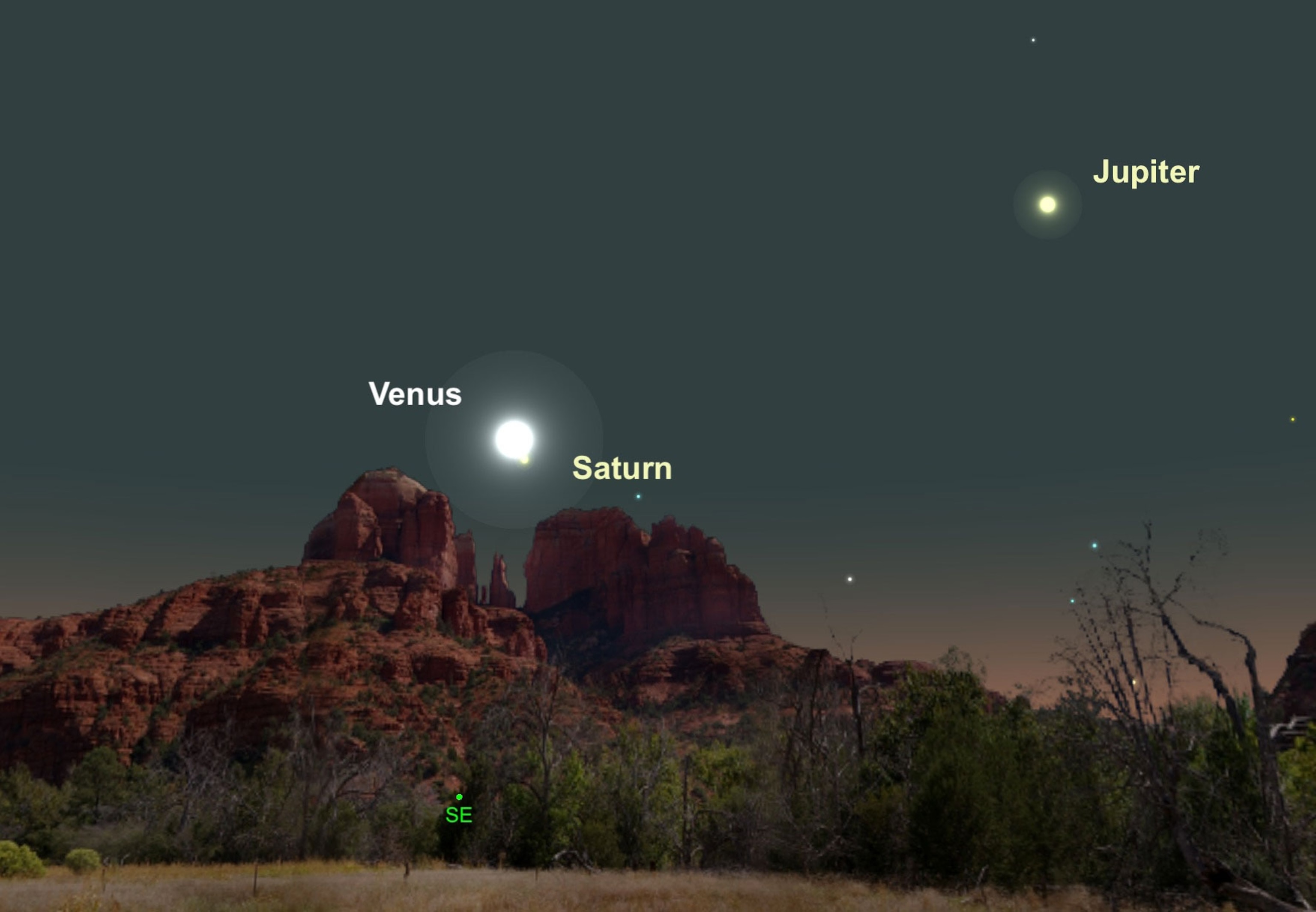
Early risers will get a special celestial treat on this night, as Saturn and Venus join forces in a stunning close encounter in the early morning skies. You may notice the dynamic duo getting closer together in the eastern sky about an hour before local sunrise a few days ahead of time. On the 18th, they will reach their tightest conjunction and be separated by only one degree. Venus will be the brighter of the two, outshining Saturn by a factor of 80.
Supermoon shines—February 19
When the moon officially reaches its full phase on the 19th, it will happen to also be especially close to Earth, delivering what has come to be known as a supermoon.
Because the moon's orbit is egg-shaped, there are times when it is at perigee, its shortest distance from Earth, or at apogee, its farthest distance. If the full moon phase happens at the same time as an especially close perigee, we see a slightly bigger and brighter lunar orb.
The difference in size between a supermoon and an average full moon is negligible, and this supermoon will only be about 13 percent brighter and bigger. But there is nothing quite as magical as watching that giant orb rising in the east after sunset, so don't miss it.
Zodiacal lights—February 21
About an hour after sunset and for the next two weeks afterward, keen sky-watchers in the Northern Hemisphere can hunt down one of the most elusive astronomical phenomena: the zodiacal light.
This pyramid-shaped beam of light is easily mistaken for the lights of a far-off city just over the dark horizon, and it is sometimes called the false dawn. But this light is even more ethereal; it is caused by sunlight reflecting off cosmic dust suspended between the planets. The best time to catch this ghostly sky show is about an hour after sunset, looking toward the western horizon from the dark countryside.
Primetime Mercury—February 26
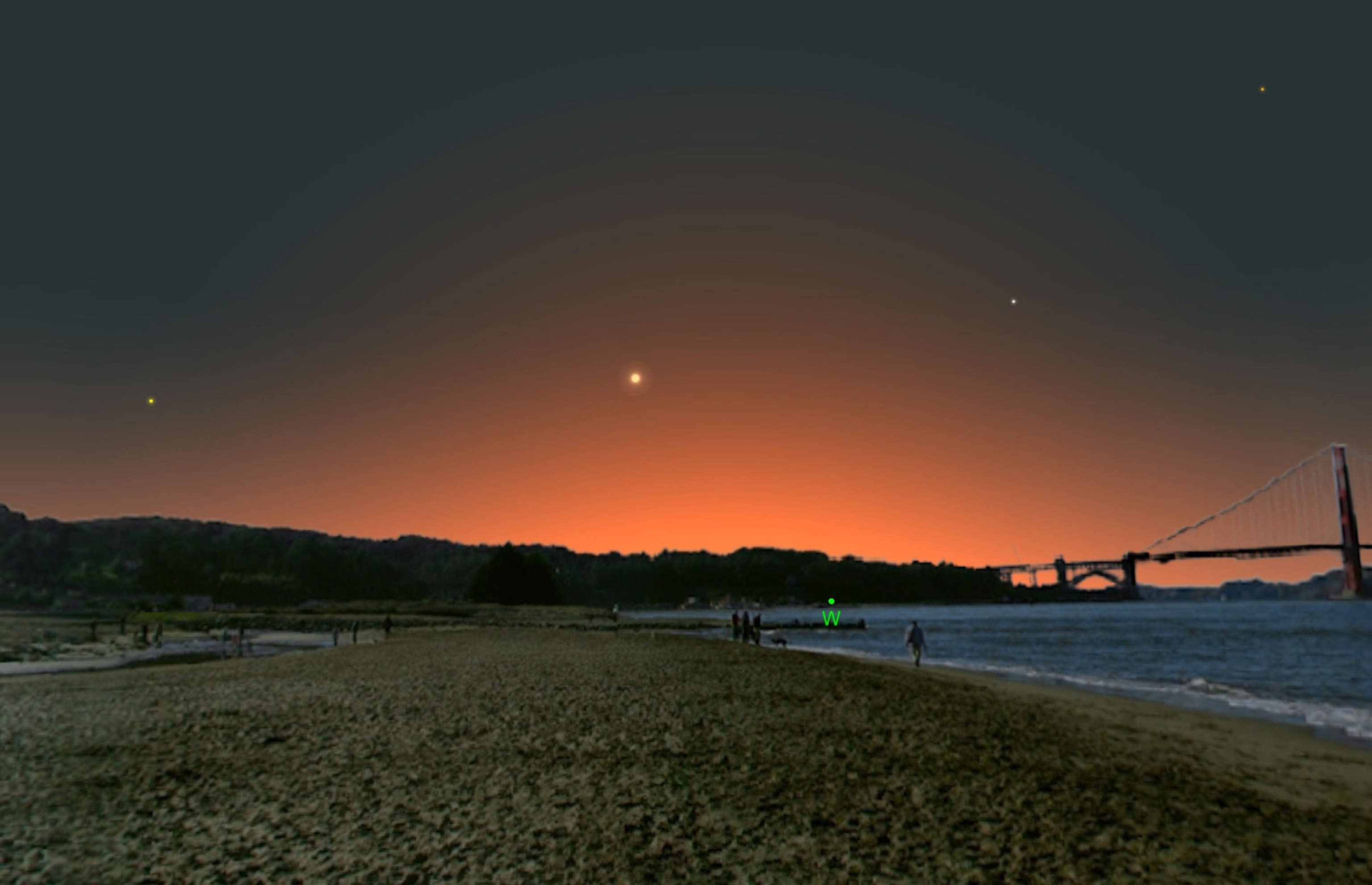
For the next few weeks, the innermost planet will be at its farthest possible separation from the sun in our evening sky for the year and so will be positioned at its very best for mid-northern latitude observers. It will appear at its highest in the west about 30 minutes after local sunset, away from the glare of dusk. Look for the little planet to appear as a faint, visible star about 11 degrees above your local horizon, or a little more than the width of your outstretched hand.
Train even a small telescope at high power on that dot of light, and Mercury will reveal its half-illuminated disk, appearing like a miniature version of the quarter moon through the eyepiece.
Moon joins Jupiter—February 27
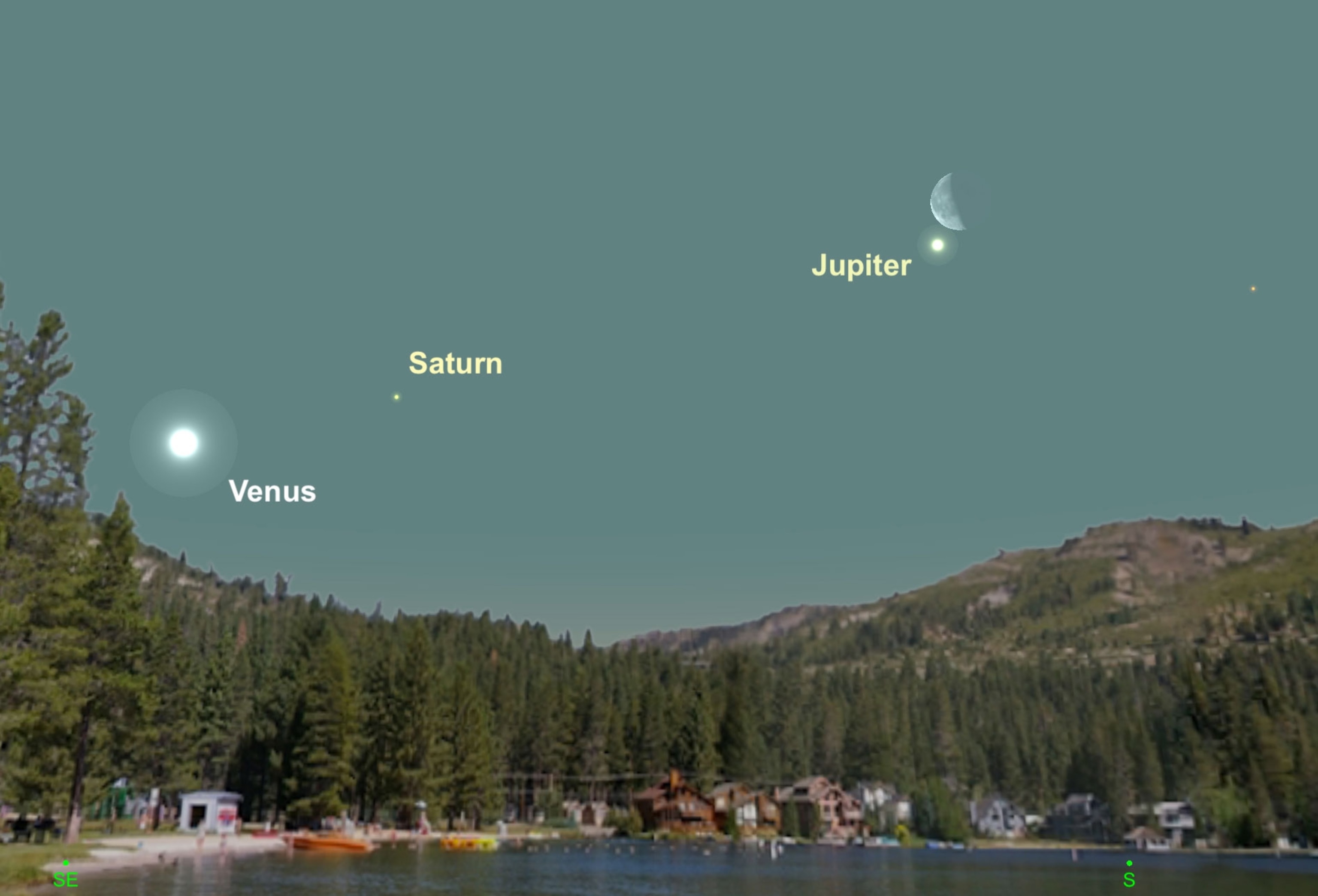
Look for a dramatic close encounter between the waning crescent moon and Jupiter at dawn on this morning. The gas giant will appear to hang just below the moon in the southern sky, making for a stunning photo opportunity. Don’t forget to train a telescope on Jupiter if you can, as its cloud bands and retinue of moons never fail to please.
Clear skies!


